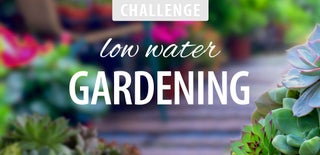Introduction: Indoor Succulent Garden
I enjoy gardening but have little space to do so. We also had a semi-traumatizing incident a few years ago when we first tried indoor container vegetable gardening and basically ended up infesting our apartment with aphids. So I've been slow to bring plants back into our home. However, before that incident I had been introduced to succulents and started collecting clippings for propagation. My goal at that time was to make a vertical succulent wall. After getting the wood frame set up and laying my clippings down to root, I quickly forgot about them and then the cats got into them.
This Instructable will show you how to set up a drainage-friendly succulent container for indoor plants. Everything in this Instructable can be applied to outdoor plants as well.
Step 1: BoM
Succulents
Planter of some type (craft stores are a great place to find unique and inexpensive -with a coupon- glass planters)
Cactus/succulent soil
Coconut Fiber Brick (small amount)
Activated charcoal/carbon
Pebbles, marbles, moss, and/or other embellishments
Tweezers, gloves, plastic spoon
Step 2: Succulents
My succulents came from a few different places: Home Depot, Lowe's, and a fantastic succulents seller on Etsy. I have a variety of Crassulas, Semperviviums, Echeverias, an Aloe, a Haworthia, Pachyveria, Pachyphytum, Grapopetallum, an Aeonium, and a few other species I have yet to 100% identify.
I tend to look for blues, purples, and pinks, I also avoid cacti due to an unfortunate incident with a cactus pear in high school---as pretty as cacti can be, why risk it? However, cacti do fit right in with succulents and can be included in your aerium.
Step 3: Planters
The planters shown in this Instructables came from Michaels, AC Moore, World Market, Savers, the Dollar Store, yard sales etc. and were either already inexpensive, or I used a coupon to make them cheaper. Any type of container will work well as a planter for succulents, food jars, wine glass, tea cup, an old French Press etc. it's just a matter of personal preference. Terra cotta pots also work :) One important thing to remember is that succulents need air and will not survive if their planter is covered.
Succulents like well draining containers, they do not like to sit in water/moisture and will begin to rot. If your pot doesn't have drainage holes, you'll need to make up for it with cactus soil, charcoal, coconut fibers or moss, and other materials to ensure your succulents aren't sitting in water.
Step 4: Coconut Fiber
Coconut fiber comes in a little vacuum packed brick that expands when water is added. This takes about 15-30 minutes. I don't need the full brick, so I chopped off a very small amount and let it soak. It's easier to keep chopping and soaking small amounts than it is to deal with a fully expanded brick you don't need right at the moment. I couldn't find the coconut brick I would usually buy at my local hydroponics gardening store, so I went to PetsMart and bought a small disc.
The coconut fiber will provide extra drainage support as well as a protective layer between the soil and the pebbles.
A lot of people use moss, but coconut fibers are more environmentally friendly and are much less expensive.
Step 5: Layers 1-4
The very first layer of your garden will be pebbles, river stones, gravel, or marbles. It doesn't really matter too much which one you use.
Your second layer is the activated charcoal which aides in drainage.
The third layer will be the coconut fiber (or moss).
The fourth layer is the soil. Depending on the size of your container, you'll want to add at least 1-2" of soil.
Step 6: Placement
Now you get to decide where your succulents will go. When you are satisfied with their locations, fill in the space around the succulents with more soil. My aerium looks a little sparse, I could have added a lot more plants, but I wanted to give the succulents more room to grow. I'll update with new pictures in a couple months when the aerium starts to fill in more.
I want variety in shape, color, and I want contrast. I want each plant to stand out on its' own.
After everything is in place, mist the soil, don't drench it. Succulents do not like sitting in moisture. If your planter looks dried out but you're not sure, wait another day or two and then add a little water. It's always better to under-water than over-water.
Step 7: Extras
The succulent in pictures 1 & 2 are Moon Silver Pachyphytums. I bought it at Lowe's and in the 2" planter it had 3 individual plants. I figured I could easily split them up by gently massaging the root ball when freed from the planter---this didn't work out 100% as I was hoping and I became very concerned about damaging the roots, so I ended up putting all three in a larger glass vase.
Now, you can leave your indoor succulent garden as is OR you can add some extra decorations. In one of my aeriums I added a few glass pebbles on top. You can add pretty much anything you want: fish tank gravel, preserved moss (which I'm currently waiting for to arrive), glass pebbles, real pebbles, mosaic tiles, crystals, gems, stones, etc. There's really no limit to the possibilities. Check back soon as I'll be updating this Instructable with links to other succulent-related creations :-D

Runner Up in the
Coconut Challenge

Participated in the
Low Water Gardening Challenge 2016

Participated in the
Makerspace Contest













